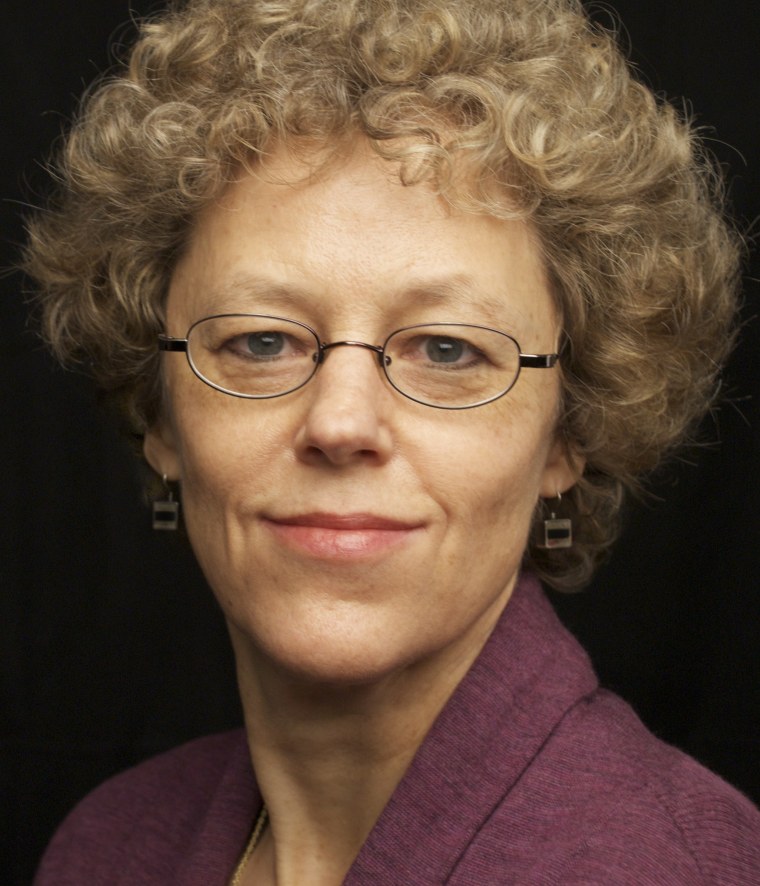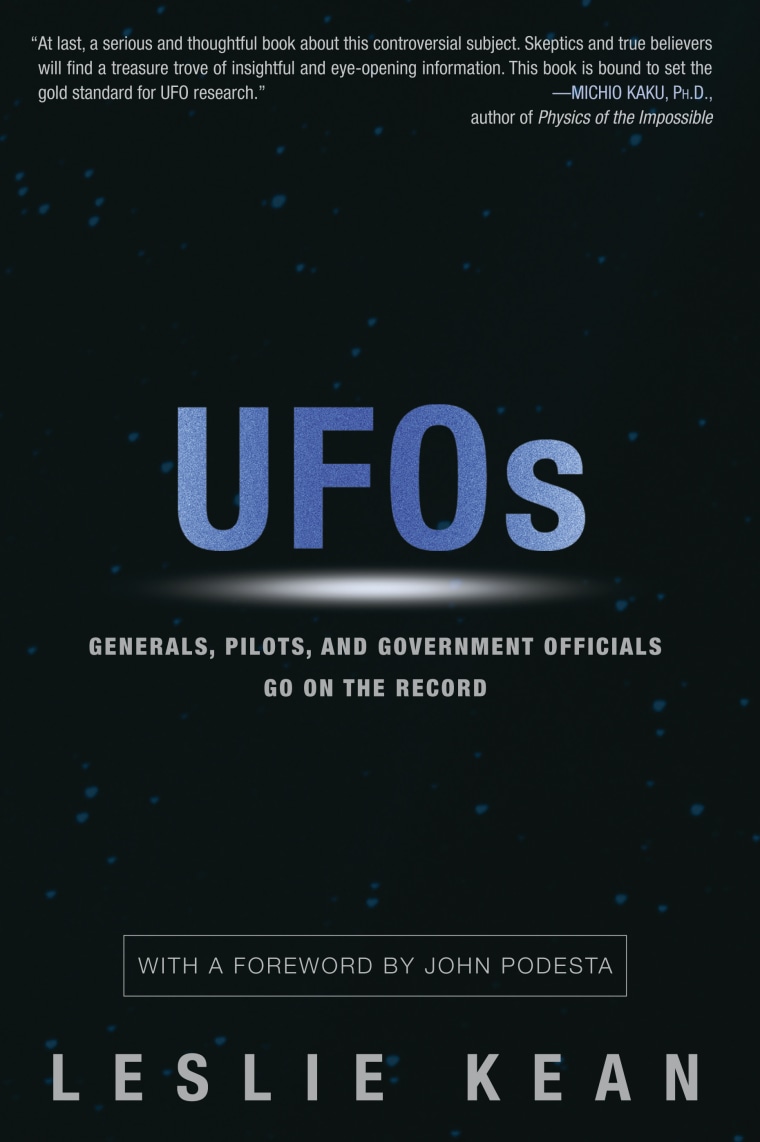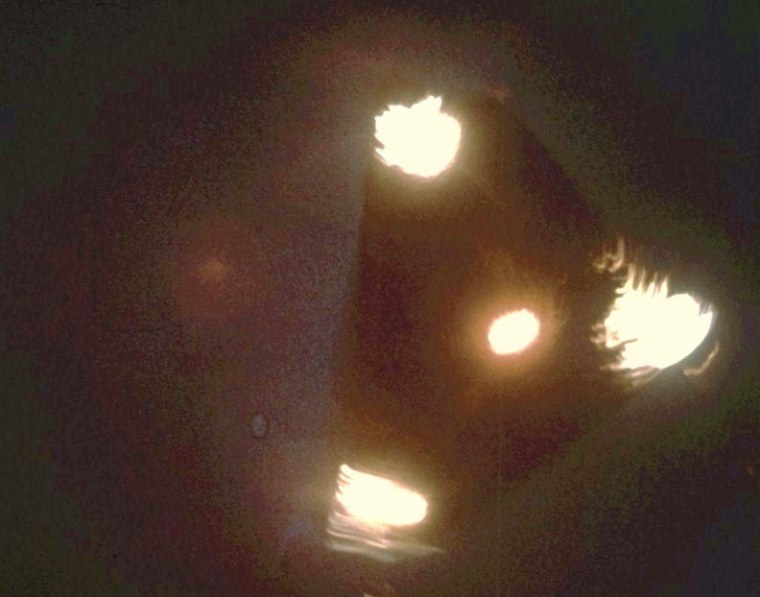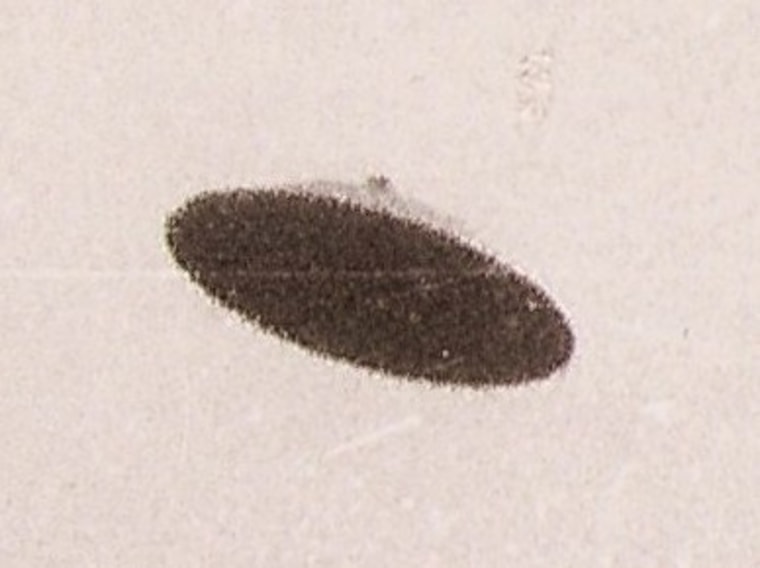When I wrote my book about officially documented UFO reports, I fully expected the skeptics to react. That’s why I was careful to focus only on the very best evidence from the most credible sources in "UFOs: Generals, Pilots and Government Officials Go on the Record." Since 95 percent of all sightings are eventually identified, the book is concerned only with the remaining 5 percent — those UFO events that have been thoroughly investigated, involve multiple witnesses and ample data, but still cannot be explained.
That didn’t stop James Oberg, a space analyst for NBC News, from complaining that the book was based on a “questionable foundation.”

In the biographical note appended to his commentary, he notes that he spent 22 years at NASA’s Mission Control and has written books about space policy and exploration. But he neglects to inform readers of something UFO researchers already know all too well: that he is a founding fellow of the Committee for Skeptical Inquiry (CSI, formerly CSICOP), a group whose aim is to debunk UFOs and any other unexplained phenomena that challenge our familiar ways of thinking.
For many years, Oberg, while retaining his stance as an objective student of the UFO phenomenon, has been a consistently vocal skeptic. His long list of articles dealing with UFOs date from the 1970s and are posted on his website under the heading "space folklore," which accurately sums up his attitude towards the subject. He may be qualified to serve as an unbiased, expert consultant on Russian or Chinese missile systems, but not on UFOs.

His objection to my many varied cases has to do with his notion that pilots are poor observers. To buttress this idea, he quotes J. Allen Hynek referring to questionable statistics compiled in the 1960s by Project Blue Book. He also cites Russian researchers describing two events in 1982 when pilot sightings were accurately identified as "military balloons" after the fact.
This is not surprising, since the vast majority of sightings can be explained, and this kind of identification is made all the time. However, such solved sightings — whether made by pilots or anyone else — have absolutely nothing to do with the cases presented in my book.
I wonder if Oberg gave "UFOs" a careful read. He spent many paragraphs quoting me concerning a report on aviation cases by French researcher Dominique Weinstein. The problem is, those are not my quotes. The chapter from which he extracted them was written by Jean-Jacques Velasco, head of the French government‘s UFO agency for over 20 years, as is obvious in his byline and narrative about French research.
Oberg gleefully proclaims that I have “faithfully vouched for” the cases in Weinstein's list, but actually, I have respectfully allowed Velasco to write his own chapter. (About half the chapters in my book were written by highly credentialed authorities and expert witnesses.) If Oberg wants to discuss the Weinstein study, he'll have to contact Velasco.
Oberg’s fixation on the question of the reliability of pilots as witnesses is not raised by the generals and aviation experts I have interviewed — officials who have studied pilot cases and interviewed pilot witnesses for decades. As described in "UFOs," French Air Force Maj. Gen. Denis Letty initiated an extensive study of UFO data because competent pilots he knew personally were confronted by the phenomenon. Chilean Gen. Ricardo Bermudez was instrumental in the founding of his country‘s official UFO investigative agency in 1997 because of inexplicable sightings involving pilots.
Richard Haines, who has written more than 70 papers in leading scientific journals and published more than 25 U.S. government reports for NASA, was formerly chief of the space agency's Space Human Factors Office and served for 21 years as a retired senior aerospace scientist at NASA's Ames Research Center. Having studied pilot sightings and related aviation safety issues for more than 30 years, and having personally interviewed hundreds of pilots during that time, Haines has concluded that pilots are indeed excellent witnesses, given their thorough training, expertise and hours of flying time.
Haines is now chief scientist for the National Aviation Reporting Center on Anomalous Phenomena. Sadly, most pilots never report their sightings, as he points out in "UFOs."
Most importantly, the aerial cases documented in "UFOs" — and many more on the record elsewhere — involve multiple factors such as:
- Sightings of long duration, allowing for accurate voice transmissions and the refinement of the initial identification.
- Multiple witnesses — co-pilot, crew, passengers, other aircraft in different locations, and occasionally observers from the ground.
- Onboard radar and ground radar recording the presence of a physical object, often corresponding exactly to the visual sighting.
- Direct physical effects on the aircraft, such as equipment malfunction.
As an example, Brig. Gen. Jose Periera of Brazil, commander of air force operations until 2005, reports on an "array of UFOs" observed over his country in 1986. Two pilots chased one of the objects for 30 minutes. Numerous other pilots saw the objects. Radar recorded them. Six jets were scrambled from two Brazilian air force bases to pursue them. Some of the pilots made visual contact corresponding to radar registrations. Both military and commercial pilots were involved. Onboard as well as ground radar systems confirmed the presence of the objects.
“We have the correlation of independent readings from different sources,” Periera writes. “These data have nothing to do with human eyes. When, along with the radar, a pilot‘s pair of eyes sees that same thing, and then another pilot‘s, and so on, the incident has real credibility and stands on a solid foundation.”
In 2007, airline captain Ray Bowyer saw two gigantic, bright yellow objects suspended over the English Channel, which he observed carefully for 15 minutes. His passengers saw them, another pilot on a second aircraft was also a witness, and an object was registered on radar.
In 1986, three Japan Airlines pilots watched a series of UFOs for 30 minutes, communicating with air traffic control while radar operators picked up the objects in corresponding locations.
I could go on with many more examples, presented in detail in the book.
Oberg says pilots may misinterpret visual phenomena when forced to make a split-second diagnosis before taking immediate action — very rare cases, I would assume — and no one would disagree with that. But, just as was the case with the solved Russian sightings I discussed earlier, this is entirely beside the point with respect to my book, because the cases presented do not involve such a scenario.
In addition, "UFOs: General, Pilots and Government Officials Go on the Record" presents many other cases that do not involve pilots at all — but often military personnel and police officers — including:
- The famous 1980 incident near RAF Bentwaters in Britain, involving the landing of a UFO and objects sending beams of light to the ground.
- The 1981 "Trans-en-Provence" landing case in France, investigated by the official French agency GEPAN.
- Belgian Maj. Gen. Wilfried De Brouwer‘s report on the wave of sightings in Belgium in 1989-90, which includes a spectacular photograph.
- The 1993 "Cosford Incident" involving a UFO over two Air Force bases in Britain, investigated by the Ministry of Defense.
- The 1997 Phoenix Lights incident that former Arizona Gov. Fife Symington described.

These are just a few of a host of cases with abundant data that don't rely on pilot observations — and which are still unsolved. It‘s the aggregate of cases, the accumulation of evidence and the long-running but unsuccessful attempts of qualified experts to resolve them that establishes the reality of a yet-unexplained physical phenomenon with extraordinary capabilities.
Oberg says that "if investigators are unable to find the explanation for a particular UFO case, that doesn't constitute proof that the case is unexplainable.” Fair enough. Perhaps there is some prosaic explanation still to be discovered. There‘s always that possibility, no matter how small.
But we remain in a state of ignorance concerning UFOs, leaving us with the conclusion presented in the book: We need a systematic, scientific investigation of the skies that actively looks for these mysterious and elusive objects. In the meantime, all I ask is that devout skeptics like Oberg read the entire book before raising objections that actually have no bearing on the matter at hand.
Investigative journalist Leslie Kean is the author of the New York Times bestseller (Harmony/Crown). Her work has appeared in many publications including The Nation, International Herald Tribune and the Boston Globe. She is also the co-author of “Burma’s Revolution of the Spirit” and co-founder of the Coalition for Freedom of Information.
